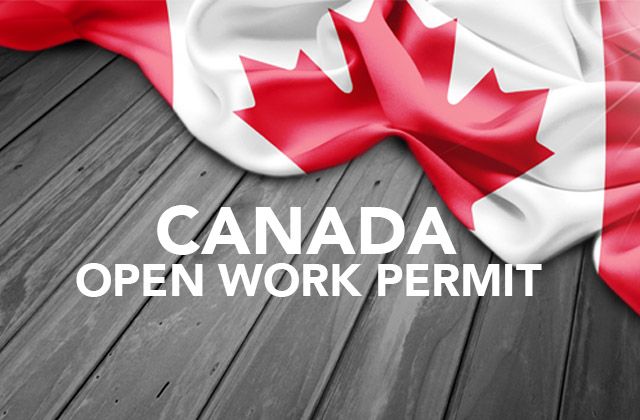How to Get Open Work Permit in Canada (2024)
For foreigners, an Open Work Permit—also known as an International Mobility Programme—is unique in Canada.
It differs from standard work permits in that it allows you to work across Canada for various employers. For Temporary Foreign Workers, this permit is particularly beneficial.
If they abide by the government’s regulations, they are allowed to work in Canada for a maximum of six months and change employers.
Are you a foreign national looking to work in Canada, but unsure where to start?
Do you dream of experiencing the country’s vibrant culture, stunning landscapes, and diverse cities while advancing your career?
If so, you’re in luck! Canada’s Open Work Permit program offers a flexible and accessible pathway for individuals from around the world to work in Canada without the need for a specific job offer or Labour Market Impact Assessment (LMIA).
In this step-by-step guide, we’ll demystify the process of obtaining an Open Work Permit in Canada, walking you through the eligibility criteria, required documents, and application process.
Whether you’re a student, a skilled worker, or simply looking for a new adventure, we’ll provide you with the tools and knowledge you need to succeed.
So why wait? Let’s dive in and explore the exciting opportunities that Canada has to offer.
ELIGIBILITY CRITERIA: WHO CAN APPLY FOR AN OPEN WORK PERMIT?
Before diving into the application process, it’s essential to determine if you’re eligible for an Open Work Permit.
The good news is that Canada welcomes individuals from various backgrounds and circumstances.
To qualify, you must meet one of the following criteria:
- International students: If you’re an international student who has graduated from a Canadian post-secondary institution, you may be eligible for a Post-Graduation Work Permit (PGWP). This permit allows you to work in Canada for up to three years, gaining valuable Canadian work experience.
- Spouses or common-law partners: If your spouse or common-law partner is a Canadian citizen, permanent resident, or temporary resident, you may be eligible for an Open Work Permit. This permit allows you to work in Canada while your partner studies or works.
- Refugees or protected persons: If you’re a refugee or protected person, you may be eligible for an Open Work Permit. This permit allows you to work in Canada while you await the outcome of your refugee claim or apply for permanent residency.
- Workers in specific professions: Certain professionals, such as traders, investors, or professionals under the North American Free Trade Agreement (NAFTA), may be eligible for an Open Work Permit.
- Other circumstances: In some cases, individuals may be eligible for an Open Work Permit due to other circumstances, such as being a dependent of a foreign representative or having a temporary resident permit.
HOW TO GET OPEN WORK PERMIT IN CANADA: A STEP-BY-STEP GUIDE
This permit demonstrates how Canada accepts and retains skilled individuals from all around the world in addition to making it simpler for people to find employment in the country.
Here are the steps to get your own open work permit easily:
STEP 1: CHECK IF YOU NEED A WORK PERMIT
Before diving headfirst into the application process, take a moment to verify if you actually need a work permit. It’s essential to understand that not everyone requires a permit to work in Canada.
Here are some scenarios where you might not need a work permit:
- Business visitors: If you’re entering Canada for business purposes, such as attending conferences, meetings, or training sessions, you might not need a work permit.
- Foreign workers in certain fields: Certain professionals, like athletes, news reporters, or emergency service providers, may be exempt from requiring a work permit.
- Volunteers: If you’re volunteering for a non-profit organization or a charitable cause, you might not need a work permit.
- Short-term workers: If you’re working in Canada for a short period (usually up to 30 days), you might be exempt from needing a work permit.
To determine if you require a work permit, ask yourself:
- Will you be engaging in work that directly competes with Canadian citizens or permanent residents?
- Will your work have a significant impact on the Canadian labor market?
If you answered “yes” to either question, you’ll likely need a work permit. Don’t worry; we’ll guide you through the process!
It’s always best to verify your specific situation with Immigration, Refugees and Citizenship Canada (IRCC) or consult with an immigration expert to ensure you’re on the right path.
STEP 2: GATHER THE ESSENTIAL DOCUMENTS
Now that you’ve determined you need a work permit, it’s time to gather the necessary documents.
Think of this step as collecting the pieces of a puzzle – each document is crucial to completing the picture!
Here are the essential documents you’ll need to gather:
- Passport: Your valid passport is the foundation of your application. Make sure it’s up-to-date and won’t expire soon!
- Proof of language proficiency: Show off your language skills with test results from a recognized language proficiency exam, such as IELTS or CELPIP for English, or TEF or DELF for French.
- Education credentials: Gather your diplomas, transcripts, and certificates to demonstrate your educational background.
- Work experience documents: Collect letters from previous employers, contracts, or pay stubs to showcase your work experience.
- Police certificate: Obtain a police certificate from your home country or the country where you’ve lived for the past six months, demonstrating your good conduct.
- Medical certificate: Depending on your country of origin or the type of work you’ll be doing, you might need a medical certificate to ensure you’re in good health.
- Proof of funds: Show that you have enough money to support yourself in Canada by providing bank statements, proof of income, or a scholarship award letter.
Ensure that you double-check the specific requirements for your situation, as additional documents might be necessary. It’s better to be over-prepared than missing a document.
STEP 3: APPLY FOR JOB OFFER OR LABOUR MARKET IMPACT ASSESSMENT (LMIA)
You’ve gathered your documents, now it’s time to secure a job offer or Labour Market Impact Assessment (LMIA) to start your Canadian work experience.
Here are your options:
- Job Offer: Find a Canadian employer willing to hire you and obtain a job offer letter. This letter should include details like your job title, responsibilities, salary, and duration of employment.
- Labour Market Impact Assessment (LMIA): If your employer needs to hire a foreign worker, they’ll need to apply for an LMIA. This assessment determines if there are Canadians available to fill the job or if it’s necessary to hire someone from abroad.
To increase your chances of success:
- Research companies and job openings that align with your skills and experience.
- Network with people in your industry and attend job fairs or events.
- Ensure your resume and cover letter are tailored to the Canadian job market.
- If your employer needs an LMIA, they’ll need to demonstrate that they’ve tried to hire Canadians first and that you’re the best candidate for the job.
STEP 4: APPLY FOR OPEN WORK PERMIT
You’ve secured a job offer or LMIA, and now it’s time to apply for your Open Work Permit.
This is the final stretch of your journey to working in Canada!
To apply, you’ll need to:
- Gather your documents: Make sure you have all the necessary documents, including your job offer letter, LMIA (if required), and proof of language proficiency.
- Fill out the application form: Complete the online or paper application form (IMM 1295) and be sure to sign and date it.
- Pay the fees: You’ll need to pay the open work permit holder fee (currently $155 CAD) and the processing fee (currently $150 CAD).
- Submit your application: Send your application to the designated processing office or submit it online through your MyCIC account.
Tips to keep in mind:
- Ensure you apply from outside Canada (unless you’re eligible to apply from within Canada).
- Make sure your application is complete and accurate to avoid delays.
- Pay attention to processing times and check your MyCIC account regularly for updates.
STEP 5: WAIT FOR PROCESSING AND APPROVAL
You’ve submitted your application, and now it’s time to play the waiting game!
This can be the most nerve-wracking part of the process, but don’t worry, we’re here to guide you through it.
Here’s what you can expect:
- Processing times: The time it takes to process your application can vary depending on the volume of applications received. Check the IRCC website for the most up-to-date processing times.
- Status updates: Keep an eye on your MyCIC account for status updates on your application. You can also contact the IRCC call centre for more information.
- Additional requests: In some cases, the IRCC may request additional information or documentation. Be sure to respond promptly to avoid delays.
- Approval: If your application is approved, you’ll receive a letter with instructions on how to obtain your work permit.
Depending on your citizenship, it may take 3 to 27 weeks to process your application once you submit it and appear in person for the interview.
STEP 6: ENTER CANADA AND START WORKING
The wait is finally over, and you’ve received your Open Work Permit!
It’s time to pack your bags and start your new adventure in Canada!
Here’s what you need to do:
- Travel to Canada: Make your way to Canada and present your travel documents, including your valid passport, visa (if required), and Open Work Permit, to a border services officer.
- Get your work permit: Once you’ve been admitted to Canada, you’ll receive your physical work permit. Make sure to review the details and ensure everything is accurate.
- Find a place to live: Settle into your new home and get familiar with your surroundings.
- Start working: Report to your employer and begin your new job!
CONCLUSION
Congratulations! You’ve made it to the end of this journey, and you’re now well on your way to achieving your Canadian dream!
Obtaining an Open Work Permit is a significant milestone, and you should be proud of yourself for navigating the process with ease.
Remember, Canada is a land of opportunity, and your Open Work Permit is the key to unlocking your full potential.
Your common-law partner, spouse, and children under the age of 18 may move to Canada with you. When you apply, be sure to include their documentation so that they can be assessed as well.





